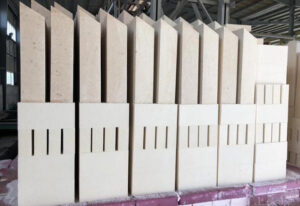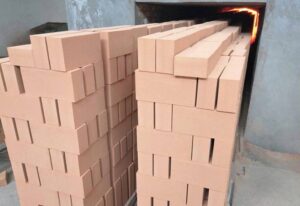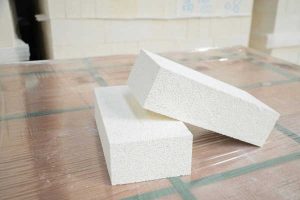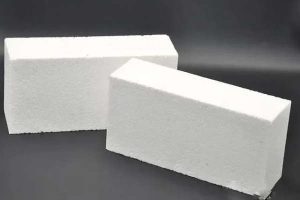Welcome to the ultimate guide to alumina bubble brick! In this comprehensive article, we will explore the properties, applications, and benefits of this versatile material. Whether you are an engineer, a builder, or simply curious about the fascinating world of refractory bricks, this guide is for you. Let’s dive in and discover everything you need to know about alumina bubble brick.
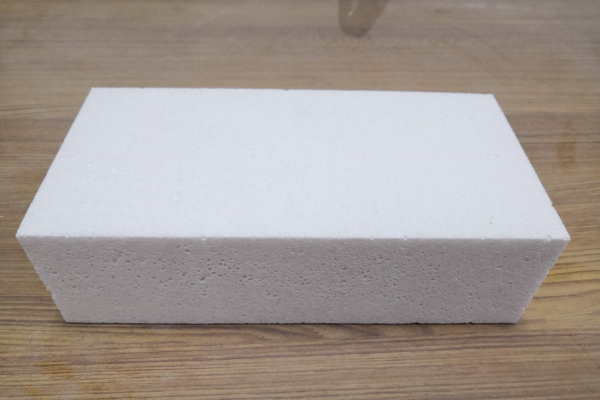
What is Alumina Bubble Brick?
Alumina bubble brick, also known as bubble alumina brick, is a type of refractory brick made from high-purity alumina powder and a small amount of additives. It is produced using a special process that involves creating numerous closed-cell air pockets within the brick structure. These air pockets, or bubbles, give the brick its lightweight and highly insulating properties.
Properties of Alumina Bubble Brick
Alumina bubble brick possesses a unique set of properties that make it ideal for various applications. Let’s take a closer look at some of its key characteristics:
1. Lightweight
Alumina bubble brick is exceptionally lightweight, thanks to its porous structure filled with air bubbles. This property makes it easier to handle and reduces the overall weight of refractory structures, which can be advantageous in certain construction projects.
2. High Insulating Capacity
One of the standout features of alumina bubble brick is its excellent insulating capacity. The air pockets within the brick act as insulators, preventing the transfer of heat. This makes alumina bubble brick a popular choice for applications that require superior thermal insulation, such as kiln linings and furnaces.
3. Low Thermal Conductivity
The low thermal conductivity of alumina bubble brick is closely related to its insulating properties. This material has a significantly lower thermal conductivity compared to other refractory bricks, which means it can effectively minimize heat loss and conserve energy in high-temperature environments.
4. Excellent Thermal Shock Resistance
Alumina bubble brick exhibits remarkable thermal shock resistance, allowing it to withstand rapid temperature changes without cracking or spalling. This property is crucial in applications where refractory materials are exposed to extreme thermal cycling, such as in the steel, glass, and petrochemical industries.
5. Chemical Stability
With its high purity and low impurity content, alumina bubble brick demonstrates excellent chemical stability. It is highly resistant to acidic and alkaline environments, making it suitable for use in corrosive industrial settings.
6. High Compressive Strength
Despite its lightweight nature, alumina bubble brick maintains a high compressive strength. This property ensures the structural integrity of refractory linings and enables the brick to withstand heavy loads and pressure.
7. Low Thermal Expansion
Alumina bubble brick has a relatively low coefficient of thermal expansion, meaning it expands minimally when exposed to heat. This characteristic helps to reduce the risk of cracking and ensures dimensional stability in high-temperature applications.
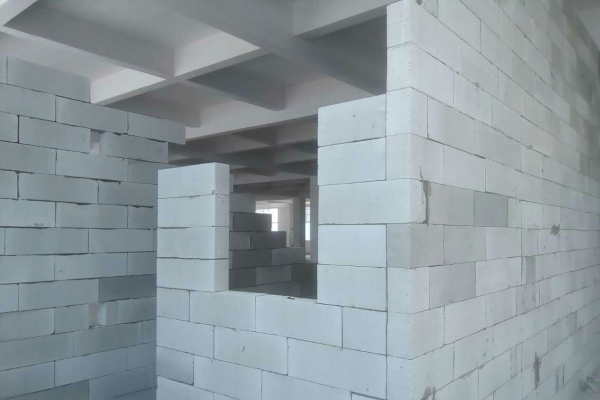
Applications of Alumina Bubble Brick
Alumina bubble brick finds wide-ranging applications across various industries. Its unique properties make it suitable for both insulating and structural purposes. Let’s explore some of the key applications of alumina bubble brick:
1. High-Temperature Insulation
Due to its exceptional thermal insulation properties, alumina bubble brick is extensively used in high-temperature insulation applications. It is commonly employed as a lining material in furnaces, kilns, and other thermal processing equipment. The brick’s ability to withstand extreme temperatures while providing efficient insulation makes it an ideal choice for these demanding environments.
2. Steel Industry
Alumina bubble brick is widely used in the steel industry due to its excellent thermal insulation and resistance to thermal shock. Here are some specific applications within this industry:
2.1 Ladle Lining
Alumina bubble brick is commonly used as a lining material for steel ladles. Ladles are vessels used to transport molten steel from the steelmaking furnace to the casting area. The lining of the ladle needs to withstand high temperatures and thermal cycling. Alumina bubble brick’s high thermal shock resistance ensures that it can handle the rapid changes in temperature without cracking or deteriorating. Its lightweight nature also reduces the weight of the ladle, making it easier to handle and improve overall operational efficiency.
2.2 Tundish Lining
Tundishes play a critical role in the continuous casting process of steel production. They act as a reservoir for molten steel, allowing for a controlled and steady flow to the molds. Alumina bubble brick is used to line the tundish to provide thermal insulation and prevent heat loss during the casting process. Its low thermal conductivity helps maintain the temperature of the molten steel, ensuring optimal casting conditions.
2.3 Blast Furnace Stove Lining
Blast furnace stoves are vital components in the iron and steel industry. They provide hot air to the blast furnace, which is essential for the combustion of fuel and the smelting of iron ore. The lining of blast furnace stoves needs to withstand high temperatures and chemical corrosion from the combustion gases. Alumina bubble brick’s excellent chemical stability and thermal resistance make it an ideal choice for lining blast furnace stoves, ensuring their durability and efficiency.
2.4 Refractory Lining in Steelmaking Furnaces
Steelmaking furnaces, such as electric arc furnaces and basic oxygen furnaces, require refractory linings that can withstand extreme temperatures and harsh chemical environments. Alumina bubble brick is used as a component of the refractory lining in these furnaces due to its lightweight, high thermal insulation, and resistance to thermal shock. It helps to optimize heat retention, reduce energy consumption, and extend the lifespan of the furnace lining.
2.5 Other Applications in the Steel Industry
Apart from the aforementioned applications, alumina bubble brick is also utilized in other areas of the steel industry. It is used for the construction of preheating walls, burner blocks, and hot metal transfer equipment. Its properties, such as low thermal expansion and high compressive strength, make it suitable for these structural applications.
Benefits of Alumina Bubble Brick
Now that we have explored the properties and applications of alumina bubble brick, let’s highlight some of its key benefits:
1. Energy Efficiency
The exceptional thermal insulation properties of alumina bubble brick contribute to energy savings in various industrial processes. By minimizing heat loss, it reduces the need for excessive energy input, leading to improved energy efficiency and cost savings.
2. Increased Productivity
The use of alumina bubble brick in refractory linings can enhance productivity in industries such as steelmaking. Its ability to withstand high temperatures, thermal cycling, and chemical corrosion ensures stable and efficient operations, resulting in increased productivity and reduced downtime.
3. Extended Equipment Lifespan
The excellent thermal shock resistance and chemical stability of alumina bubble brick contribute to the longevity of refractory linings. By withstanding the harsh conditions of high-temperature environments and corrosive atmospheres, it helps extend the lifespan of equipment, reducing the need for frequent repairs and replacements.
4. Reduced Maintenance Costs
The durability and reliability of alumina bubble brick result in reduced maintenance costs. Its resistance to thermal shock, high temperatures, and chemical corrosion means that it requires less frequent repairs and replacements compared to other refractory materials. This translates to cost savings for industries that rely on alumina bubble brick for their applications.
Lightweight Construction
Alumina bubble brick’s lightweight nature offers advantages in construction projects. Its low density makes it easier to handle and transport, reducing labor and logistical costs. Additionally, the use of lightweight materials can contribute to overall structural weight reduction, which can have benefits in terms of structural integrity and foundation requirements.
Versatility and Adaptability
Alumina bubble brick is a versatile material that can be used in a wide range of applications. Its excellent insulating properties make it suitable for high-temperature environments, while its chemical stability allows for use in corrosive atmospheres. The ability of alumina bubble brick to withstand thermal cycling and its high compressive strength make it adaptable to different industrial settings and processes.
Environmental Friendliness
Alumina bubble brick is an environmentally friendly choice due to its energy-saving properties. Its excellent thermal insulation reduces energy consumption, leading to a lower carbon footprint and reduced greenhouse gas emissions. Furthermore, the longevity of alumina bubble brick contributes to a reduction in waste generation from frequent replacements, making it a sustainable option for industries.
Conclusion
In conclusion, alumina bubble brick is a remarkable refractory material with a unique set of properties and a wide range of applications. Its lightweight nature, high thermal insulation, resistance to thermal shock and chemical corrosion, and other beneficial characteristics make it a preferred choice for industries such as steelmaking, glass manufacturing, petrochemicals, and more. Whether it’s lining furnaces, ladles, or tundishes, alumina bubble brick excels in providing excellent insulation, energy efficiency, and durability.
By using alumina bubble brick in industrial processes, companies can benefit from reduced energy consumption, increased productivity, extended equipment lifespan, and lower maintenance costs. Its environmental friendliness and adaptability further contribute to its appeal as a sustainable and versatile material.
As technology and research continue to advance, alumina bubble brick may undergo further enhancements and innovations to meet the evolving needs of various industries. With its outstanding properties and wide-ranging applications, alumina bubble brick will undoubtedly play a significant role in shaping the future of refractory materials.
Thank you for joining us on this ultimate guide to alumina bubble brick. We hope this comprehensive article has provided valuable insights into its properties, applications, and benefits. If you have any more questions or require further information, feel free to explore reputable sources such as Wikipedia or consult with industry experts.

